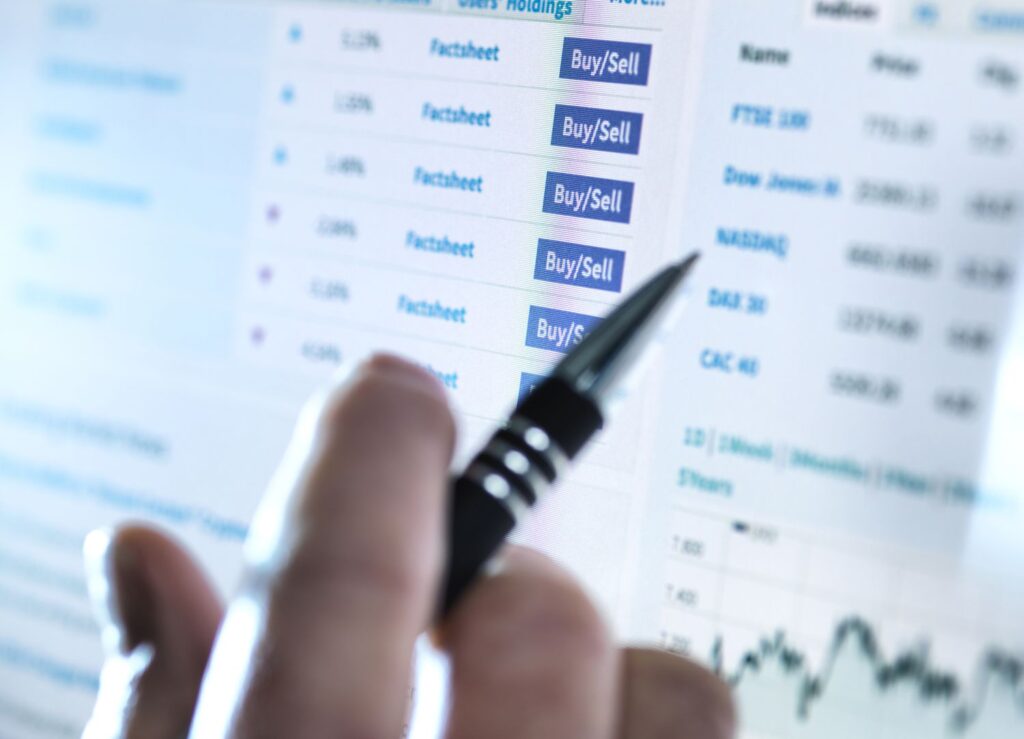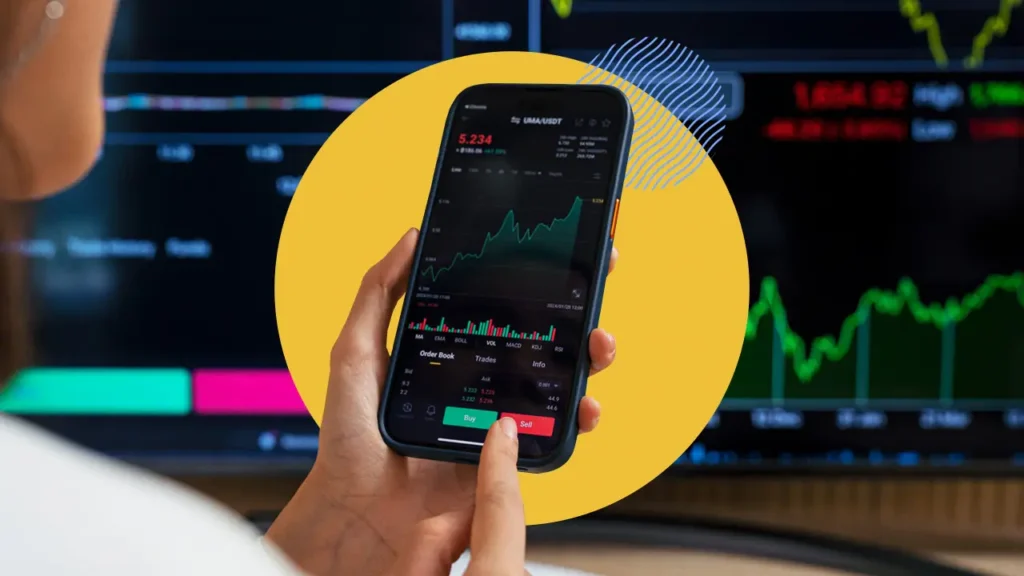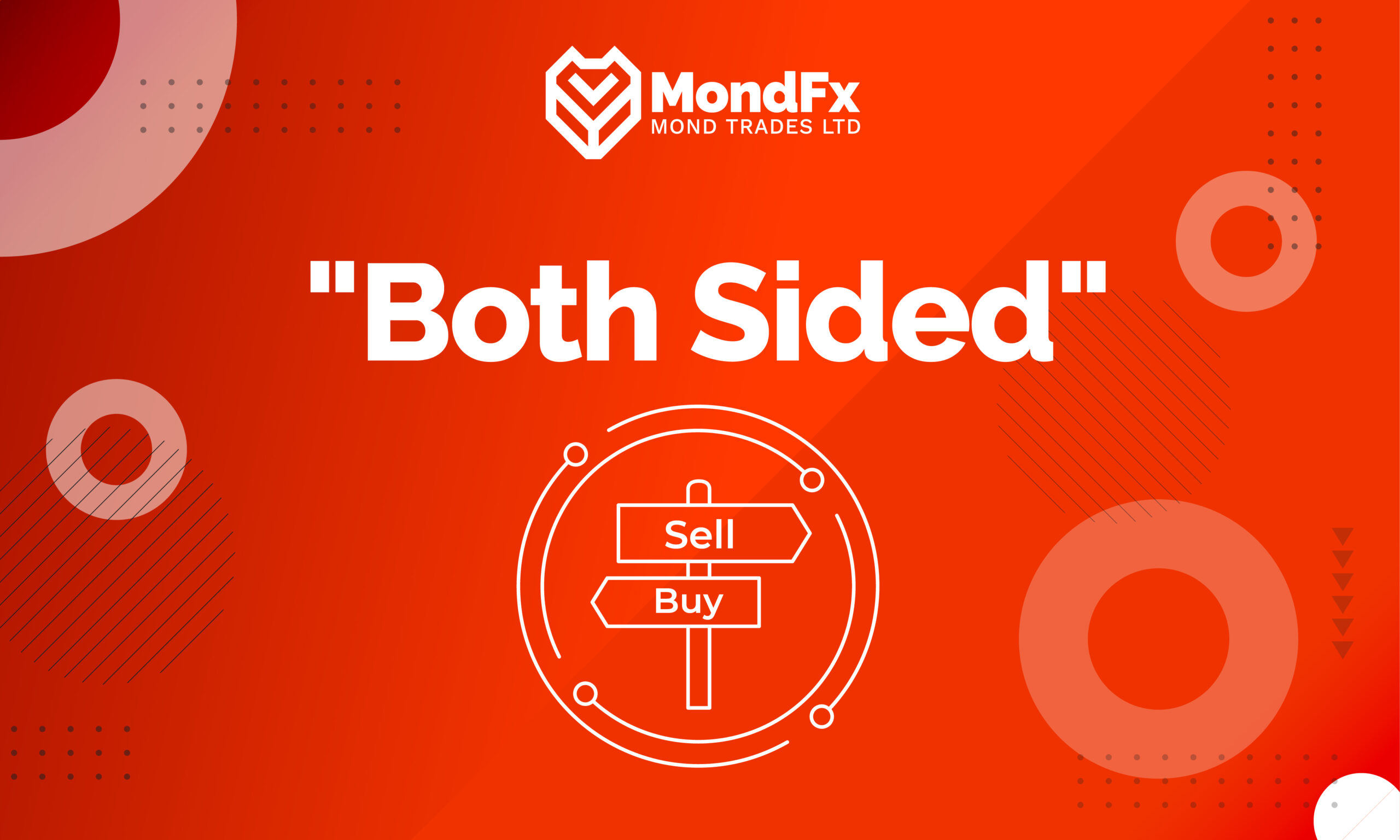Two-sided markets play a vital role in shaping financial flows and resource allocation. By enabling trading in both directions, these markets inject a dynamism into the economy that goes beyond the limitations of traditional one-sided markets. From stock exchanges to currency and commodity markets, two-sided markets serve as the driving force behind financial innovation, risk management, and price discovery. A thorough understanding of the nature and functioning of these markets is essential not only for investors and traders but for anyone seeking a deeper comprehension of the mechanisms of the modern economy.
Definition and concept of a two-sided market
Financial markets can be broadly categorized into two types: one-sided markets and two-sided markets. In one-sided markets, investors can only profit by purchasing assets and hoping for their prices to rise. In other words, profitability in these markets is limited to bullish market conditions. However, the concept of a two-sided market means that investors can take advantage of financial opportunities both during market upturns and downturns.
A two-sided market is one where shareholders, anticipating a decline in a stock’s price, can engage in short selling. This means they sell a stock that they don’t actually own and commit to buying it back at a later date to fulfill their obligation. This feature allows investors to capitalize on profit opportunities in both rising and falling markets.
Difference between a two-sided market and a one-sided market
A one-sided market is designed in such a way that investors can only profit by purchasing and holding assets. In this market, profitability is dependent on rising prices, and during market downturns, investors incur losses. In other words, in a one-sided market, the only way to make a profit is to buy low and sell high.
However, in a two-sided market, investors can not only buy and hold assets but can also engage in short selling. Short selling enables profitability in declining market conditions. In this method, an investor sells shares they do not own, hoping that the price will decrease so they can buy them back at a lower price in the future and return them to the original seller. This is the key difference between a two-sided and a one-sided market, allowing investors to capitalize on declining market conditions.
Advantages of a two-sided market
In addition to the ability to profit in declining markets, two-sided markets offer several other advantages, which will be discussed below.
Increase of liquidity
One of the most important advantages of a two-sided market is increased liquidity. In one-sided markets, when the market is in a downturn, many investors tend to sell their assets, which can lead to decreased liquidity. However, in a two-sided market, short selling ensures that trading continues even during downturns, preserving market liquidity.
Greater variety of trading strategies
Two-sided markets allow for a wider range of trading strategies to be implemented. In these markets, investors can employ various strategies such as hedging, arbitrage, and pair trading. This diversity of trading strategies helps investors manage risk and improve the efficiency of their investments.
More efficient price discovery
Another advantage of a two-sided market is more efficient price discovery. In two-sided markets, more information about investor sentiment and expectations is available. This information can help to discover fairer and more realistic prices. In other words, in a two-sided market, prices more accurately reflect the true value of assets due to the existence of trades in both directions.
By offering short selling, increased liquidity, a wider variety of trading strategies, and more efficient price discovery, two-sided markets enable investors to capitalize on financial opportunities in various market conditions. By providing greater tools for risk management and improving investment efficiency, these markets contribute to the growth and dynamism of financial markets.

Types of two-sided markets
Two-sided markets come in various types, each with its own unique characteristics. Below, we will discuss four main types of these markets:
Spot Markets
Spot markets, also known as cash markets or spot exchanges, are the most common type of two-sided market. In these markets, buyers and sellers interact to trade goods, currencies, or securities immediately.
In spot markets, the delivery of goods or assets, and the payment for them, typically occur within a short period after the transaction. This type of market is ideal for traders seeking high liquidity and the ability to execute trades quickly.
Stock, currency, and physical commodity markets, such as gold and oil, are examples of spot markets. In these markets, prices fluctuate continuously based on real-time supply and demand, and traders can quickly buy or sell the desired assets.
Futures Markets
Futures markets are another type of two-sided market where parties agree to buy or sell a specific asset at a predetermined price on a future date. These contracts are used as a tool for risk management and hedging against price fluctuations.
In futures markets, buyers and sellers can engage in transactions without the need to physically possess the underlying asset. This increases market liquidity and efficiency. Additionally, the presence of leverage in these markets allows traders to potentially earn larger profits (or losses).
Futures markets exist for commodities such as oil, gold, and grains, as well as for stock indices and currencies. These markets play a significant role in price discovery and risk transfer in the economy.
Forward Markets
Forward markets share similarities with futures markets, but there are also significant differences between them. In forward contracts, two parties agree to buy or sell a specific asset at a predetermined price on a future date.
The primary difference between forward and futures contracts is that forward contracts are typically negotiated privately, outside of an exchange, between two parties. These contracts offer greater flexibility and can be customized to meet the specific needs of the counterparties.
Forward markets are widely used in currency, commodity, and interest rate transactions. These markets enable companies and investors to manage risks associated with future price fluctuations.
Options Markets
Options markets are the most complex type of two-sided markets. In these markets, the buyer of an option acquires the right (but not the obligation) to buy or sell an underlying asset at a predetermined price on a specified date. Conversely, the seller of an option is obligated to fulfill the contract if the buyer wishes.
Options are primarily divided into two main types: call options and put options. A call option grants the holder the right to buy an asset, while a put option grants the holder the right to sell an asset.
Options markets provide flexible tools for risk management and profit generation. These markets allow traders to profit from price fluctuations in both directions and also limit their risk. Options are available for a variety of underlying assets, including stocks, indices, currencies, and commodities.
Each of these types of two-sided markets plays a crucial role in the modern financial system. By providing risk management, price discovery, and liquidity, they contribute to greater market efficiency and optimal resource allocation. Understanding the differences between these market types is essential for investors, traders, and risk managers so they can use the appropriate tools to achieve their financial goals.
Examples of Two-Sided Markets
Stock Exchange
The stock market is one of the most well-known examples of a two-sided market. In this market, shares of companies, bonds, and other securities are traded. The primary characteristic of a stock market as a two-sided market is that traders can both buy and sell, even if they don’t currently own the asset.
In the stock market, investors can profit from rising stock prices by buying them, or they can benefit from falling prices through short selling. Short selling is a process where a trader borrows shares they don’t own and sells them, hoping to buy them back later at a lower price.
Well-known exchanges like the New York Stock Exchange (NYSE) and Nasdaq are prime examples of two-sided markets. By providing high liquidity and transparent pricing, these exchanges play a crucial role in financing companies and allocating capital in the economy.
Forex Market
The foreign exchange market, or Forex, is the largest financial market in the world and serves as an excellent example of a two-sided market. In this market, various currency pairs are traded. Traders can simultaneously buy one currency and sell another, which demonstrates the two-sided nature of the market.
For example, if a trader expects the value of the US dollar to increase relative to the euro, they can sell the EUR/USD pair (meaning they buy dollars and sell euros). Conversely, if they expect the dollar to decrease in value, they can buy this pair.
The foreign exchange market, or Forex, operates 24 hours a day, five days a week, and its daily trading volume reaches trillions of dollars. This market plays a significant role in global trade, international investment, and foreign exchange risk management.
Commodity Market
The commodity market is another example of a two-sided market. In this market, various commodities such as oil, gold, copper, wheat, and other agricultural products are traded. Traders can buy and sell these commodities physically or through futures and options contracts.
In the commodity market, producers, consumers, and investors can all benefit from price fluctuations. For example, an oil producer can lock in a selling price for their product in the future by selling futures contracts, while a refinery can manage their input costs by purchasing these contracts.
Commodity exchanges such as the Chicago Mercantile Exchange (CME) and the London Metal Exchange (LME) are among the most important global commodity trading centers. These markets play a crucial role in price discovery, risk management, and providing liquidity for various industries.
In all three examples above, the primary characteristics of two-sided markets are evident, which include the following:
Simultaneous buying and selling: In all three markets, traders can act as both buyers and sellers.
High liquidity: The high volume of transactions in these markets facilitates quick entry and exit.
Efficient price discovery: The continuous interaction between buyers and sellers leads to the formation of fair prices.
Ability to use complex strategies: Traders can employ tools such as short selling and leveraged trading.
Crucial role in the global economy: These markets play a key role in resource allocation, risk management, and financing.
A thorough understanding of how these markets function is essential for investors, policymakers, and economic actors, as these markets play a significant role in shaping the global economy and determining the prices of various assets.

The role of intermediaries in two-sided markets
Intermediaries play a crucial role in creating and maintaining balance in two-sided markets. By providing the necessary infrastructure and services, these entities enable effective interactions between buyers and sellers. In the following, we will examine three main types of intermediaries in two-sided markets.
Brokers
Brokers act as the bridge between buyers and sellers. They facilitate the trading process by providing specialized services. The primary roles of brokers include:
Gathering and providing market information: Brokers provide clients with important market data by accessing extensive information resources.
Expert advice: They provide clients with necessary guidance by analyzing market conditions.
Order execution: Brokers execute buy and sell orders on behalf of clients in the market.
Reducing transaction costs: By aggregating orders, brokers can reduce transaction costs for clients.
An example of brokers in financial markets is stock brokerage firms, which provide stock buying and selling services to investors.
Market makers
Market makers play a crucial role in creating liquidity and price stability in two-sided markets. By simultaneously quoting both bid and ask prices, they facilitate the flow of transactions. The primary responsibilities of market makers include:
Two-sided pricing: Market makers are always ready to buy and sell assets at specified prices.
Reducing the bid-ask spread: By offering competitive prices, they narrow the gap between the bid and ask prices.
Attracting liquidity: Market makers, through their continuous presence in the market, direct the flow of liquidity towards the market.
Market stabilization: In volatile conditions, market makers prevent excessive price fluctuations by buying and selling in a balanced manner.
For instance, in the securities market, market makers are obligated to simultaneously quote both a bid price and an ask price for every security they manage.
Trading floors
Trading floors provide the essential infrastructure for conducting transactions in two-sided markets. These institutions, by creating a secure and efficient platform, assure both parties involved in a trade. Key roles of trading floors include the following:
Order matching: Trading floors use advanced algorithms to match buy and sell orders.
Clearing and settlement: They manage the process of transferring funds and assets between the parties involved in a transaction.
Risk management: Trading floors mitigate trading risks by implementing control mechanisms.
Providing transparent information: They disseminate real-time data on trading volume and prices.
For example, stock exchanges and commodity exchanges serve as trading floors in the financial and commodity markets.
In summary, intermediaries enhance the efficiency of two-sided markets by fulfilling various roles. By reducing search costs, increasing information transparency, and managing risks, they create an environment that encourages active participation from both buyers and sellers. Additionally, intermediaries foster trust between trading parties, contributing to the growth and development of two-sided markets.
It should be noted that the role and importance of each of these intermediaries may vary depending on the type of market and industry.
Risks and Challenges of Two-Sided Markets
Severe price fluctuations
In two-sided markets, the ability to trade in both directions (buying and selling) can lead to more severe and rapid price fluctuations. These fluctuations can be caused by a variety of factors. For example, when important news is released, traders can quickly change their positions and even enter the market in the opposite direction of their previous position. This can result in sudden and sharp changes in prices. Additionally, the presence of leveraged trading and short selling in these markets can exacerbate volatility. Severe price fluctuations can be extremely risky for inexperienced investors and may even lead to the loss of their entire investment. Furthermore, excessive volatility can create instability in the market and reduce investor confidence.
High Leverage and Trading Risks
One of the key characteristics of two-sided markets is the ability to use leverage in trading. In such trades, an investor can trade a larger volume of assets with an amount less than the total value of the transaction. While this can increase potential profits, it also significantly increases the risk of loss. If the market moves against the investor’s expectations, losses can exceed the initial investment and even result in debt. This is particularly dangerous for novice traders who may not fully understand the associated risks. Additionally, widespread use of leverage at the market level can lead to the creation of price bubbles and ultimately financial crises, as seen in the 2008 financial crisis.
Market Manipulation and Fraud
Due to their complexity and the variety of trading instruments, two-sided markets are susceptible to various forms of fraud and manipulation. One of the most common types of fraud is wash trading, where a trader or group of traders engage in reciprocal buying and selling to create a false sense of trading volume and influence prices. Additionally, price manipulation through the dissemination of false or misleading information is also prevalent in these markets. In two-sided markets, the possibility of short selling can lead to abusive behavior, such as spreading negative rumors to drive down stock prices. Furthermore, insider trading, where individuals with access to confidential company information engage in trading, is another serious challenge in these markets. These types of fraud and manipulation not only damage investor confidence but can also lead to the misallocation of resources and reduce market efficiency.
While two-sided markets offer diverse opportunities for investment and profit, they also come with significant risks and challenges. Severe price fluctuations, risks associated with high leverage, and the threat of market manipulation and fraud all require serious attention from investors, regulators, and policymakers. To address these challenges, measures such as strengthening oversight, educating investors, imposing appropriate limits on the use of leverage, and improving information transparency are necessary. Additionally, investors should enter these markets with a full understanding of the existing risks and with appropriate risk management strategies.
Ultimately, despite these challenges, two-sided markets continue to play a significant role in the modern economy, and with proper risk management, they can contribute to economic growth and development.

Conclusion
The Importance of Two-Sided Markets in the Global Economy
The significance of two-sided markets in the global economy and their role in asset pricing are key aspects in understanding modern financial systems. Given the nature of one-sided and two-sided markets as previously explained, the importance and impact of two-sided markets can be summarized as follows:
Two-sided markets play a crucial role in shaping the global economy. Unlike one-sided markets where investors can only profit from price increases, two-sided markets allow for the exploitation of price movements in both directions. This characteristic makes these markets more liquid and creates higher efficiency in resource allocation.
One of the most significant aspects of two-sided markets is their ability to create more efficient pricing mechanisms. In these markets, prices respond rapidly to new information as traders can quickly adjust their positions. This, in turn, causes information to be quickly reflected in prices, which is a key characteristic of efficient markets.
Furthermore, two-sided markets play a crucial role in global risk management. The ability to short sell in these markets allows investors to hedge their risks and employ a wider range of strategies for managing their portfolios. This, in turn, contributes to greater financial stability at the macroeconomic level.
Two-sided markets also play a significant role in facilitating the flow of capital on an international level. By providing the ability to trade in both directions, these markets allow international investors to easily enter and exit various markets, which contributes to a more efficient global dispensation of capital.
The Role of Two-Sided Markets in Asset Pricing:
Two-sided markets play a fundamental role in the process of price discovery and asset pricing. In these markets, prices are the result of a complex interaction between buyers and sellers, both of whom can decide to buy or sell at any given time.
One of the most important characteristics of two-sided markets in asset pricing is their ability to rapidly reflect new information. When new information enters the market, traders can quickly adjust their positions, either by buying or selling. This causes prices to move rapidly towards the fair value of assets.
Additionally, the ability to short sell in two-sided markets allows negative sentiment towards an asset to be quickly reflected in prices. This, in turn, results in more accurate pricing and less overvaluation of assets.
Two-sided markets also play a significant role in risk pricing. In these markets, the price of an asset reflects not only its intrinsic value but also the associated risk. This helps investors make more informed decisions about allocating their capital.
Finally, it should be noted that while two-sided markets offer many advantages, they also come with risks and challenges. Severe price fluctuations, the possibility of market manipulation, and risks associated with leveraged trading are among these challenges. Therefore, to effectively harness the benefits of these markets, there is a need for close monitoring, appropriate regulations, and adequate investor education.
Overall, two-sided markets play a crucial role in the global economy and the asset pricing process. By enabling trading in both directions, they contribute to increased market efficiency, improved risk management, and more optimal resource allocation. A sound understanding of how these markets operate is essential for policymakers, investors, and all economic actors.
Ultimately, a sound understanding of the nature and functioning of two-sided markets is essential for policymakers, economic actors, and the general public. This understanding can contribute to improvement of economic efficiency, increase of transparency, and sustainable development on a global scale.
Finally, for those interested in entering the two-sided markets, MondFX offers a simple and reliable solution. By providing a user-friendly and secure platform, this broker enables traders of all levels to benefit from the diverse advantages of two-sided markets. With MondFX, you can confidently take your first steps in this field and seize various trading opportunities.



